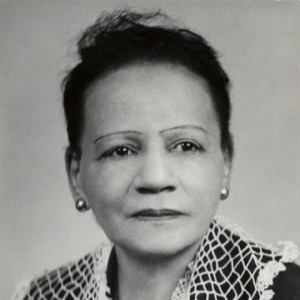Nancy Elizabeth Prophet 


Nancy Elizabeth Prophet
Rhode Island, United States
Nancy Elizabeth Prophet (1890–1960) was an American artist of African-American and Native American ancestry, known for her sculpture. She was the first African-American graduate from the Rhode Island School of Design in 1918 and later studied at L'Ecole des Beaux-Arts in Paris during the early 1920s. Wikipedia
JOINED: over a year ago
HONORS:
LAST 12 MONTHS: 0
AWARDED: 0
LAST ACTIVE: NEVER
Prophet was born ... to a family with deep roots in the region. She described her mother, Rosa E. Walker Profitt, as a “mixed Negro.” Her father, William H. Profitt, claimed both African and American Indian ancestry; his mother was a Narragansett-Pequod who had bought William’s father out of slavery and then married him. The sculptor, who identified herself as “mulatto” in a 1910 census, changed her identity to “Indian” in the 1920 census. This ambivalence about her racial heritage plagued Prophet throughout her life. Invited in 1959 to be included in the book American Negro Art, Prophet refused, insisting that “an anthropologist must certainly know that I am not a Negro, and though I am of mixed blood, the two races which I represent are quite different from that which you wish your publication to represent.” https://www.encyclopedia.com/education/news-wires-white-papers-and-books/prophet-nancy-elizabeth-1890-1960
ACCOUNT: : In Memoriam :
Rhode Island, United States
Nancy Elizabeth Prophet (1890–1960) was an American artist of African-American and Native American ancestry, known for her sculpture. She was the first African-American graduate from the Rhode Island School of Design in 1918 and later studied at L'Ecole des Beaux-Arts in Paris during the early 1920s. Wikipedia
JOINED: over a year ago
HONORS:
1
LAST 12 MONTHS: 0
AWARDED: 0
LAST ACTIVE: NEVER
Prophet was born ... to a family with deep roots in the region. She described her mother, Rosa E. Walker Profitt, as a “mixed Negro.” Her father, William H. Profitt, claimed both African and American Indian ancestry; his mother was a Narragansett-Pequod who had bought William’s father out of slavery and then married him. The sculptor, who identified herself as “mulatto” in a 1910 census, changed her identity to “Indian” in the 1920 census. This ambivalence about her racial heritage plagued Prophet throughout her life. Invited in 1959 to be included in the book American Negro Art, Prophet refused, insisting that “an anthropologist must certainly know that I am not a Negro, and though I am of mixed blood, the two races which I represent are quite different from that which you wish your publication to represent.” https://www.encyclopedia.com/education/news-wires-white-papers-and-books/prophet-nancy-elizabeth-1890-1960
ACCOUNT: : In Memoriam :

Honors Received
◄ Jo Leath ⊙3
[P7.2024.24] 16/06/2024
Honoured for showing a perspective that had not been seen before.
[P7.2024.24] 16/06/2024
Honoured for showing a perspective that had not been seen before.
 HonorPay
HonorPay